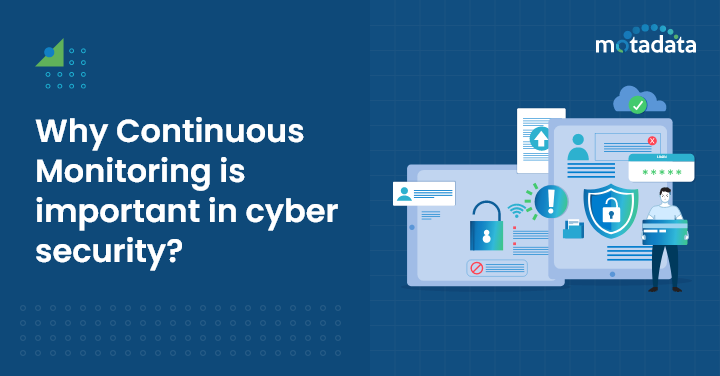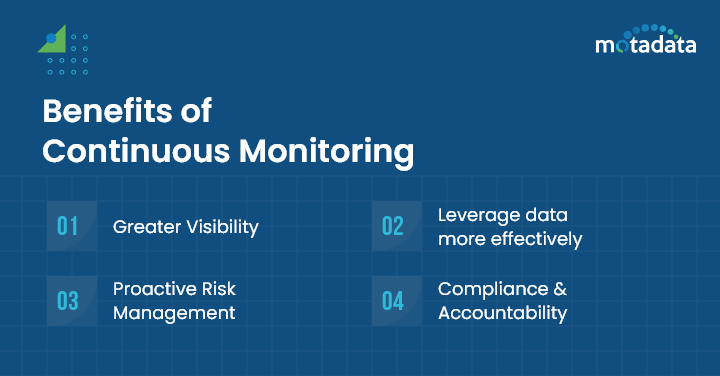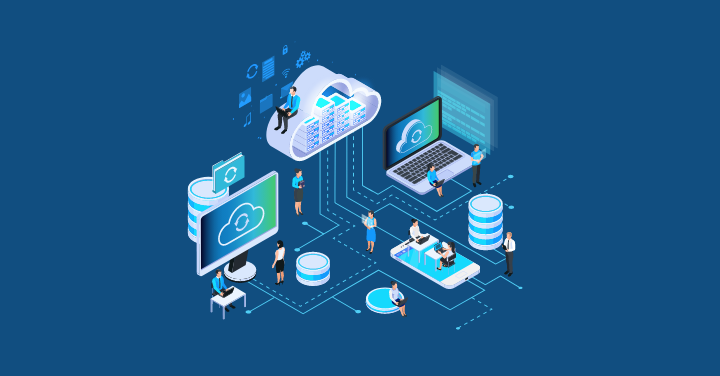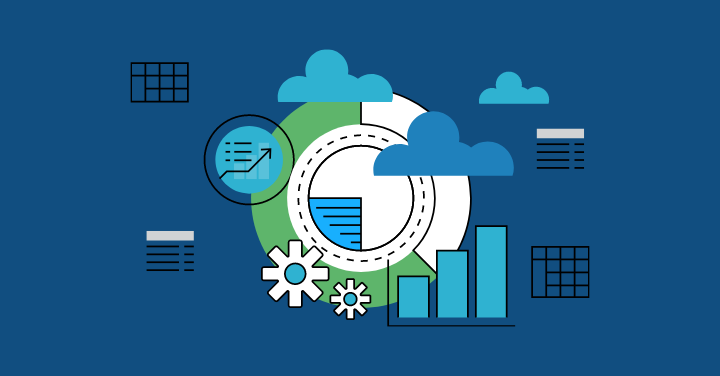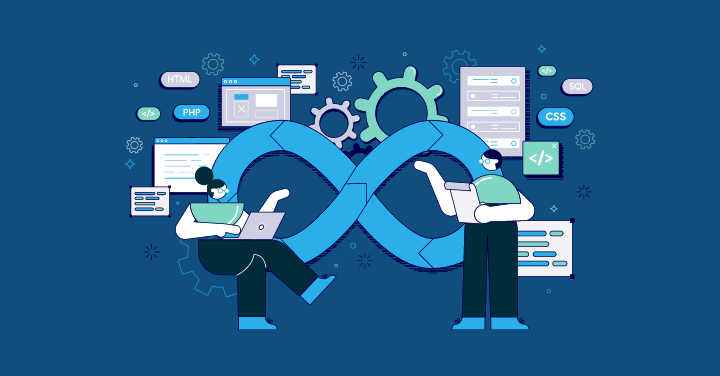Continuous monitoring is the backbone of staying ahead in your business, maintaining a constant watch on your company’s activities. It adapts to the demanding needs of modern times, whether for compliance checks, continuous control, and infrastructure monitoring or defending against cyber threats.
However, before the widespread adoption of continuous monitoring, companies relied on periodic audits, manual assessments, and sporadic checks to monitor their systems.
Traditional security measures, such as firewalls, antivirus software, network monitoring and scheduled security assessments were reactive and less capable of providing real-time insights into potential issues.
In the early to mid-2000s, when the business landscape faced increased reliance on digital systems, the growing complexity of IT environments pushed the need for continuous monitoring to strengthen security measures and risk management.
If you are still unsure about continuous monitoring, this blog covers everything. Not just the meaning of continuous monitoring but its importance, benefits, components, challenges, and solutions. So, keep reading this blog till the end.
What is Continuous Monitoring?
Continuous monitoring is a real-time observation and analysis of diverse elements, including cyber security, network security, system downtime, compliance, and operational efficiency. It rapidly identifies and resolves your organisation’s security postures, guaranteeing the best user experience and peak system performance.
How does it do it? The Continuous monitoring process involves automation tools, continuous integration, analytics, and alerting mechanisms to provide real-time insights, allowing you to respond quickly to emerging issues and overall security posture.
This approach is valuable in maintaining the security, compliance, data security and efficiency of various systems and processes within your organization.
Why is Continuous Monitoring Required?
You need continuous monitoring because of the dynamism it brings to your organization. It provides real-time awareness and offers immediate visibility into ongoing activities. Continuous monitoring becomes a proactive shield against potential threats and security vulnerabilities.
Beyond security, the significance of continuous monitoring extends to ensuring continuous compliance with regulatory requirements and decreasing the risk of penalties and legal repercussions.
This vigilant approach allows you to detect and respond to security threats, minimizing the impact of cyber-attacks and data breaches.
Moreover, continuous monitoring contributes to operational efficiency by identifying and addressing issues, reducing downtime, and improving overall business continuity.
In a rapidly evolving environment, continuous monitoring emerges as a strategic tool, enabling your business to adapt to changes and cross the complexities of modern times with more confidence.
Why Continuous Monitoring is important in Cyber Security?
Continuous monitoring is important in cyber security because it works as your organization’s early warning system against cyber threats. With the increasing reliance on technology for day-to-day operations, the need for robust information security measures has become more critical than ever.
Cyber security risks have risen, and the chief information security officers [CISOS] need to implement strategies that ensure real-time monitoring of threats to prevent data breaches.
Continuous monitoring detects cyber threats in real time, reducing the risk of prolonged attacks and protecting sensitive data. This immediate action is also paramount in maintaining the trust of your customers and stakeholders.
Moreover, continuous monitoring limits the impact of data breaches and maintains the security posture of an organization by identifying and stopping security incidents.
You should also learn on protecting your digital identity online. This process ultimately reduces the risk of data exposure and saves sensitive information.
Continuous monitoring also assesses risks, ensuring security measures adapt to evolving cyber threats, security breaches and vulnerabilities.
Not only this, but Continuous monitoring goes beyond pre-incident analysis. It provides a comprehensive post-incident analysis, helping to understand the nature of the attack to prevent similar incidents in the future.
In today’s interconnected digital landscape, where cyber threats constantly evolve, the ability to detect and thwart malicious activities in real time is not just a best practice – it’s an absolute necessity for the continuous security and reputation of an organization
What are the Benefits of Continuous Monitoring?
1. Greater Visibility
Continuous monitoring boosts your awareness without depending on traditional methods like periodic checks or data sampling. Rather, it offers a constant real-time assessment, whether it’s your application monitoring, infrastructure, networks, or user activity.
This ongoing observation ensures you always have an accurate understanding of the performance, health, and security of your IT systems. Unlike occasional checks that might miss important events, continuous monitoring gives you a constant stream of insights.
This not only helps spot potential issues quickly but also lets you take proactive steps, making your IT setup more robust and responsive. In simple terms, continuous monitoring is like having a constant and detailed view of everything happening in your IT world.
2. Leverage Data More Effectively
Continuous monitoring ensures that the information you get from monitoring is not only up-to-date but also useful. Rather than dealing with outdated or incomplete data, continuous monitoring involves collecting and reading information in real-time.
It means you are always working with the most current insights into the state of your IT systems and networks including the computing, storage, network, and other physical devices found in traditional data centres or their virtual equivalents within cloud platforms.
The advantage here is the ability to make timely and informed decisions. Instead of reacting to past events, you’re responding to what’s happening at the moment.
This real-time approach enhances the effectiveness of your decision-making and responses, contributing to the overall health and security of your IT environment.
3. Risk Management
Continuous monitoring works by constantly watching over your IT systems in real-time. It detects and fixes potential risks and threats before they harm you.
How does it do that, you wonder? When the Continuous monitoring process notices something problematic, it immediately sends alerts to notify you. These alerts are warning signals that help you focus on the rising issues.
What’s even better is that continuous monitoring not only warns you –but also takes quick actions to fix things automatically. Additionally, continuous monitoring can automatically take action to fix problems. It always ensures your information system remains safe and operates optimally.
4. Compliance and Accountability
Continuous monitoring involves regularly checking and overseeing your IT systems to ensure they follow rules and standards like GDPR, HIPAA, or PCI DSS. To put this into action, you create and consistently follow a clear plan for monitoring your systems.
This ongoing observation helps you stay aware of your system’s activities, ensuring they align with the established rules for data protection and privacy.
The significance of this continuous oversight lies in creating detailed documentation. This documentation serves as evidence that you are diligently following the rules. You get a record to share with the responsible organisation and stakeholders who create the rule.
You can say that continuous monitoring is a systematic and reliable approach to document and demonstrate your commitment to maintaining a secure and compliant environment by following regulatory standards.
What are the Key Components of Continuous Monitoring?
Explain how each component can be monitored and analyzed to identify unusual or potentially malicious activities
Hardware, Software, Data, Networks, and User Behaviors
Monitoring and analyzing hardware, software, data, networks, and user behaviors is critical for identifying potential security threats in an IT environment.
Hardware surveillance involves – watching physical devices that include IT infrastructure like servers and computers for any unauthorized access or unexpected changes.
The software domain tracks applications and system software operations to help uncover software bugs and anomalies like unauthorized installations or unusual program behaviour for uncovering security threats.
As a critical asset, data requires monitoring to track its creation, access, and modification. Analyzing data patterns allows organizations to uncover abnormal usage, providing early indications of potential data breaches. At the same time, the network surveillance identifies unusual traffic patterns or suspicious connections.
Finally, observing user behaviors involves monitoring how individuals interact with IT systems, encompassing login activities and overall usage patterns. Detecting diversions from normal behaviour, such as multiple failed login attempts or unusual access times, is vital for identifying and addressing potential unauthorized access.
The continuous monitoring of these domains establishes a baseline, and any deviations trigger alerts, allowing for a proactive response to potential security risks and ensuring the overall safety and integrity of the IT system.
Logs, Metrics, Traces, and events
These data sources Logs, metrics, traces, and events are the eyes and ears of your IT system. They provide real-time visibility, alerts, and analysis of metrics and events.
Logs
These detailed records capture activities and changes within systems and applications. Analyzing log files provides insights into historical events, aiding in troubleshooting, and identifying security incidents.
Logs are detailed records that remember all the actions and changes in your computer. Looking at these records helps you figure out historical events, helping in troubleshooting & continuous security monitoring.
Metrics
These are the quantitative measurements that assess the performance and health of systems. Continuous monitoring of metrics enables the real-time assessment of system efficiency and gives you alerts when predefined thresholds get surpassed.
Traces
Traces are the footsteps that provide a detailed overview of the flow of data or processes. It works to identify a problem and resolve performance issues.
Events
These are noteworthy incidents or occurrences within a system. Monitoring events allows for immediate awareness of critical incidents, facilitating rapid response to potential issues.
Continuous Monitoring Tools and Solutions
Continuous monitoring tools and solutions are complex systems designed to manage and interpret data within your computer environment. Their primary functions include – collecting, processing, storing, and presenting information from various sources, offering valuable insights and actionable recommendations.
In the data collection phase, these tools gather information from diverse areas of your computer systems, including logs, metrics, traces, and events.
Once collected these tools process and organize data into a clear and understandable format. The organized data is then stored securely, creating a repository which allows easy retrieval and analysis whenever needed.
The presentation aspect is also significant, as these tools display the information in a user-friendly manner. It often looks like dashboards or visual representations, offering a clear picture of the system’s performance and any potential issues.
More importantly, these tools go beyond presenting data; they provide actionable insights and recommendations for your IT system.
Continuous Monitoring Policy and Procedure
The continuous monitoring policy and procedure is a document that outlines the roles, responsibilities, and tasks of the monitoring team. It specifies what areas and how often monitoring activities will occur.
Additionally, it establishes the criteria and thresholds for triggering alerts and generating reports. The document also details the steps to be taken in case of a security incident, including escalation procedures and the process for resolving the issue.
To summarize, continuous monitoring policy and procedure serve as a guidebook that ensures everyone involved understands their roles, the scope of monitoring, when to raise alerts, and what steps to follow in case of a security concern.
Continuous Monitoring Team and Stakeholders
The continuous monitoring team consists of individuals directly involved in the day-to-day implementation, and maintenance of the Continuous monitoring framework. These team members actively oversee the system, ensuring its effectiveness and responsiveness to potential security issues.
On the other hand, indirect stakeholders who are not directly managing the system play a crucial role by contributing insights and collaborating to achieve broader security objectives.
Their involvement may include providing strategic input, offering context on business needs, and ensuring that the continuous monitoring efforts align with overall security and organizational goals.
Together, the team and stakeholders form a collaborative force dedicated to strengthening the security of the organization.
What are the Challenges and Solutions of Continuous Monitoring?
Some of the common challenges and limitations of continuous monitoring are:
1. Data Volume and Complexity
When dealing with a vast and diverse array of data sources, the continuous monitoring system may face challenges in managing the sheer volume and complexity.
The overwhelming amount and varied data types can strain the system’s capabilities, potentially impacting its efficiency and accuracy in processing and interpreting information.
2. False Positives and Negatives
False positives occur when the monitoring system triggers alerts for events that are not actual threats, leading to unnecessary responses and resource wastage.
On the other hand, false negatives happen when the system fails to detect genuine threats, resulting in missed opportunities and potential security vulnerabilities.
Striking the right balance to reduce both types of errors is crucial for the effectiveness of the continuous monitoring system.
3. Human Errors
Despite advanced technologies, human involvement introduces the possibility of errors within the continuous monitoring process. The monitoring team sometimes makes mistakes, overlooks critical details, or misinterprets data, potentially leading to poor decisions or delayed responses.
Adequate training and procedural checks become essential to mitigate the impact of human errors.
4. Resource Constraints
Implementing and maintaining a strong continuous monitoring system demands substantial resources, including investments in hardware, software, skilled personnel, and ongoing training.
Some organizations find resource allocation challenging, potentially limiting the effectiveness of monitoring capabilities.
Striking a balance between the available resources and the system’s requirements is crucial for sustainable and effective continuous monitoring.
Solutions to Overcome Challenges & Limitations of Continuous Monitoring
1. Data Filtering and Aggregation
Data filtering and aggregation means refining the raw information collected by the continuous monitoring system. This process aims to eliminate unnecessary noise and redundancy, focusing on consolidating relevant and valuable data for analysis.
By honing in on the essential information, this step ensures that the subsequent analysis is efficient and meaningful. As a result, you get an effective utilization of a continuous monitoring framework.
2. Alert Prioritization and Correlation
Sorting alerts by priority and connecting them for better understanding are key steps. It involves assessing the severity and impact of each alert and establishing a connection to their root causes and related events.
Prioritization classifies alerts based on their seriousness, while correlation seeks to uncover connections between alerts and their root causes. This process organizes and deciphers alerts for a more insightful and informed response.
3. Automation and Orchestration
Automation tools and orchestration automate repetitive or routine tasks through scripts, workflows, and tools. This approach not only saves time but also reduces manual effort.
Coordination between different systems and teams is streamlined, reducing the likelihood of errors and enabling a more synchronized and effective response to security incidents.
It’s a well-organized and automated workflow that minimizes errors and enhances the overall effectiveness of the continuous monitoring process.
4. Training and Education
Training and education are integral components of a successful continuous monitoring strategy. It involves equipping the monitoring team and other stakeholders with the necessary skills and knowledge on an ongoing basis.
For any IT team, understanding security threats and incident response is important for making an informed decision. Regular training and education ensure that the team stays aware of evolving cyber security landscapes, enhancing their ability to interpret and respond to emerging threats responsibly.
FAQs
In the IT landscape, continuous monitoring is essential for staying ahead of potential risks and maintaining the security of an organization’s systems. Continuous monitoring works as an intrusion detection system.
In cyber security, it plays a significant role in detecting network security and data breaches.
It safeguards sensitive data from cyber-attacks. With the ever-growing complexity of IT environments, continuous monitoring provides real-time insights, helping any organization adapt to dynamic changes.
Even compliance with regulations is a top priority in the IT domain, and continuous monitoring ensures ongoing adherence, reducing the likelihood of regulatory violations and associated consequences.
Continuous monitoring is the routine surveillance of predefined metrics—such as server logs for security and network traffic patterns—to ensure IT stability, security, and compliance.
It operates within established parameters, providing a systematic approach to safeguarding system integrity.
Conversely, observability is about a comprehensive insight into system behaviour and performance. It facilitates troubleshooting and optimization by exploring diverse data sources.
The difference is that– Continuous monitoring sticks to predefined checks for stability and compliance.
And, observability offers a versatile, exploratory approach for in-depth comprehension, troubleshooting, and performance optimization in dynamic IT landscapes.
Continuous monitoring uses diverse tools to get a comprehensive sight of an issue, such as
- Security Information and Event Management (SIEM) systems like Splunk, IBM QRadar and ArcSight to collect and analyze security data and respond to security incidents.
- Network performance monitoring tools such as SolarWinds, PRTG Network Monitor and Nagios to monitor network health, detect performance issues and ensure optimal network functions.
- Endpoint Detection and Response (EDR) solutions like Crowd Strike, Carbon Black and SentinelOne to monitor and respond to suspicious activities on endpoints.
- Log management systems like ELK Stack, Graylog and Sumo Logic for collecting, indexing and analyzing log data for insights into system activities.
- Vulnerability scanning tools like Nessus identify and assess system vulnerabilities.
- Compliance monitoring solutions like Tripwire and McAfee Policy Auditor to ensure adherence to regulatory standards and internal policies.
- Cloud monitoring platforms like Azure Monitor, AWS CloudWatch and Google Cloud Monitoring to manage cloud resource performance, availability and security of cloud resources.
Integrating continuous monitoring into the DevOps process involves several steps:
- Select monitoring tools compatible with your DevOps environment, considering factors like automation capabilities, scalability, and integration options.
- Include monitoring in automated deployment pipelines- to consistently track application performance at every deployment phase.
- Include monitoring configurations in IaC scripts, ensuring automatic application of monitoring settings with infrastructure changes.
- Set up instant feedback loops to give quick insights to developers and operations teams during development.
- Collect logs and metrics from different sources into a central system for thorough monitoring and analysis.
- Integrate security monitoring tools into CI/CD pipelines to identify and address security vulnerabilities early in development.
- Implement monitoring solutions that can dynamically scale with the infrastructure, accommodating the evolving nature of DevOps environments.
- Foster collaboration between development, operations, and security teams, ensuring a shared responsibility for monitoring and enhancing overall system reliability.
Following these steps, you can integrate continuous monitoring into your DevOps processes, promoting a proactive and collaborative approach to software development and operations.



